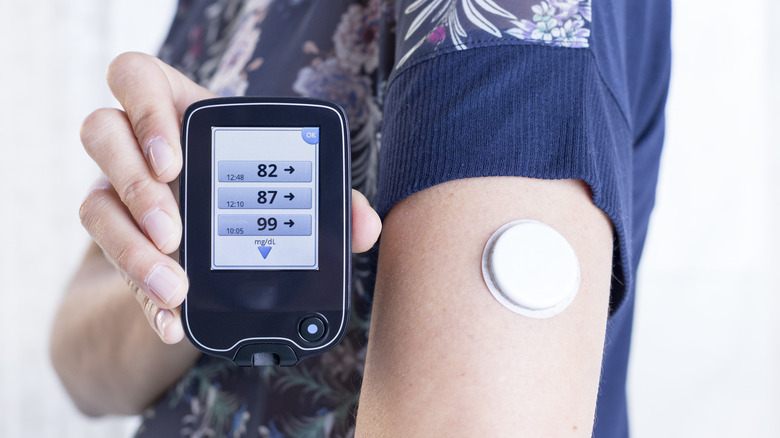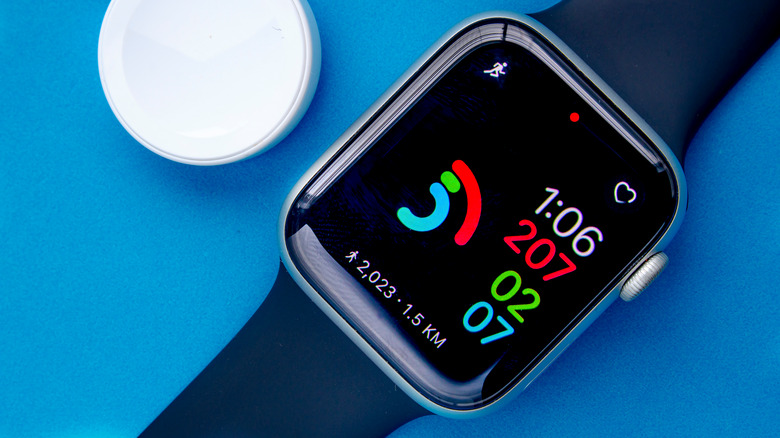Who Should Really Wear A Continuous Glucose Monitor?
People living with diabetes are able to measure their blood sugar levels easily with a simple device called a continuous glucose monitor (CGM). A CGM is a small sensor that's used to track blood sugar levels, usually worn on the upper arm or abdomen. According to Endocrine Today, the first CGM was approved for personal use in 2005 by the FDA and has "revolutionized diabetes care."
With cumbersome finger pricks now becoming a thing of the past, CGMs can be used to easily monitor blood sugar, even sending alerts to your phone when levels are dangerously high or low. According to 2020 data, 34.2 million Americans (10.5% of the U.S. population) have diabetes (via Diabetes Research Institute Foundation). Needless to say, this tool can be crucial in managing the disease and improving quality of life, as a study in Pharmacy and Therapeutics demonstrated. However, this tool is being increasingly used by healthy people who don't have diabetes at all. Why?
People without diabetes don't need to wear one
Americans are already using smartwatches to track everything from steps, heart rate, sleep patterns, and menstrual data (via Harvard Health) And many healthy Americans are now wanting to track their blood sugar, too. Dr. Anne L. Peters, professor of clinical medicine at Keck School of Medicine at the University of Southern California, told Endocrine Today, "I have put these on so many worried well people who can afford to pay for it." According to Endocrine Today, Fitbit, Apple, and Google are reportedly investing in continuous glucose monitor technology, along with many smaller startups — and they're being aimed at adults without diabetes.
However, there's a lack of peer-reviewed studies on the benefit of healthy people using CGMs. Additionally, the devices aren't cheap — they can cost several thousand dollars a year — and therefore aren't accessible to many, per Harvard Health. And until there's more evidence that they're helpful to those without diabetes, they're typically not covered by health insurers. So while there's no real harm in trying one out to get better acquainted with your body's functions, you may want to wait for more comprehensive research before you go out and splurge on an unnecessary medical device.


